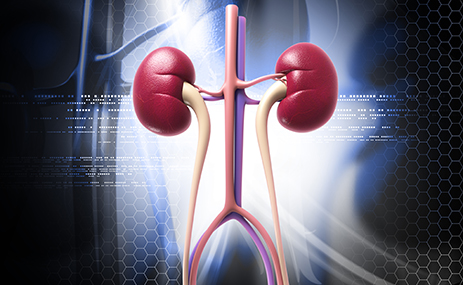Acute kidney injury related to iodinated contrast significantly increases morbidity and mortality after angiography or angioplasty. According to registries, its prevalence can vary from 2% in low-risk population to up to 50% in high-risk subjects. Its risk factors include previous renal failure, diabetes, age, and the amount/type of contrast used.

As a preventive measure, international guidelines (IA recommendation) suggest using 0.9% physiological solution. However, in the PRESERVE study (NEJM, 2018), this scheme showed no significant differences in hard endpoints such as death, need for dialysis, or prevention of contrast-related kidney injury, compared with intravenous sodium bicarbonate or acetylcysteine administration.
The aim of this study, called TEATE, was to test the hypothesis that effective alkalinization with a pH >6.0 could decrease the probability of contrast-induced nephropathy (CIN).
A randomized, open-label study was conducted in three centers in Italy where three arms of intervention were evaluated. In group 1 (the control group), patients only received hydration with saline solution 6 hours before the procedure and 12 hours after, at a rate of 1 mL/kg/h (the rate during the previous hour was 3 mL/kg/h). The intravenous bicarbonate group received hydration with saline 5 hours before at 1 mL/kg/h. Subsequently, a 1.4-% bicarbonate solution for one hour (3 mL/kg/h); during and after the procedure, bicarbonate was continued at 1 mL/kg/h for 6 hours, ending with an infusion of saline solution 1 mL/kg/h for the remaining 6 hours.
Finally, the oral sodium bicarbonate group received the same treatment as the control group with saline solution before and after the procedure, receiving an oral dose of 4 g dissolved in 60 mL (47.6 mEq) one hour before and three hours after the procedure.
Urine alkalinization was defined as pH >6.0 immediately prior to contrast administration; the CIN was defined as a 25-% increase in creatinine or a 25-% decrease in glomerular filtration rate.
A total of 247 patients were randomized, of whom 81 were in the hydration group, 82 in the intravenous bicarbonate group, and 78 in the oral bicarbonate group. Mean patient age was 79 years old. Angiography alone was performed in 58% of cases, with an average contrast volume of 112 mL.
Read also: Should We Start Using Ultra-Thin Struts?
Patients who achieved a pH >6 immediately before angiography had a significantly lower difference in contrast nephropathy (odds ratio: 0.48; 95% confidence interval: 0.25-0.90; p = 0,023). When analyzing the percentage of patients who achieved correct urine alkalinization, for those who received intravenous or oral bicarbonate, the difference was significant (71% and 65% respectively), with a higher pH delta in the endovenous arm (p < 0.001). However, there were no significant differences regarding the incidence of nephropathy between the three strategies (20% vs. 21% vs. 22%, p = 0.94).
Conclusions
In this study, pH control prior to a contrast procedure was inversely related to the incidence of contrast nephropathy, with better alkalinization in those who received intravenous bicarbonate. However, when comparing the strategies with the incidence, no significant differences were observed, which suggests that pH is a marker rather than a mediator of nephropathy.

Dr. Omar Tupayachi.
Member of the Editorial Board of SOLACI.org.
Original Title: Urine alkalinisation to prevent contrast-induced acute kidney injury: the prospective, randomised, controlled, open-label TEATE trial.
Reference: Lombardi, Marco et al. “Urine alkalinisation to prevent contrast-induced acute kidney injury: the prospective, randomised, controlled, open-label TEATE trial.” EuroIntervention : journal of EuroPCR in collaboration with the Working Group on Interventional Cardiology of the European Society of Cardiology vol. 18,7 (2022): 562-573. doi:10.4244/EIJ-D-22-00010.
Subscribe to our weekly newsletter
Get the latest scientific articles on interventional cardiology





